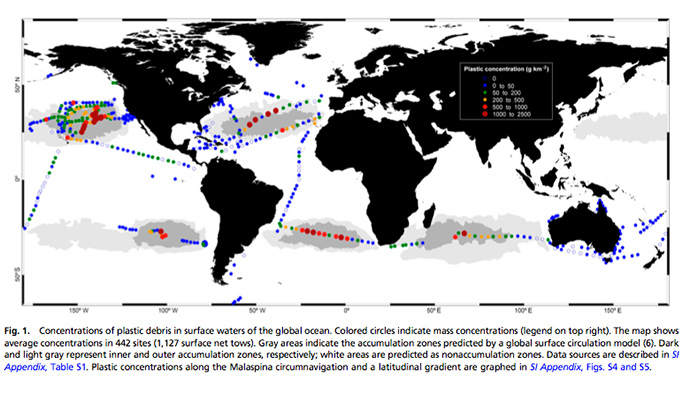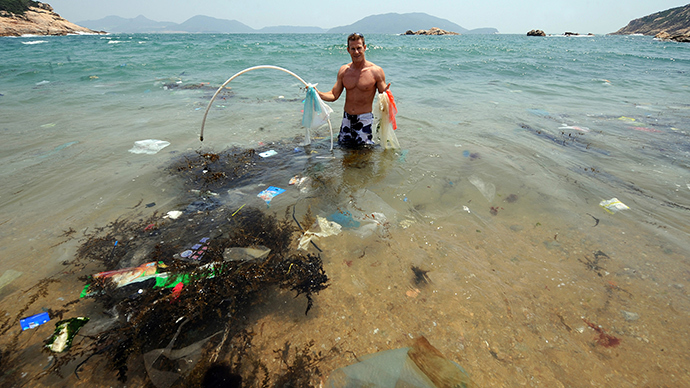At least 88 percent of the surface of the world’s open oceans is polluted by plastic debris, says a new scientific report. The findings raise large concerns of the safety of marine life and how this ocean litter may affect food chains.
"Those little pieces of plastic, known as microplastics, can last hundreds of years and were detected in 88 percent of the ocean surface sampled during the Malaspina Expedition 2010," lead researcher and the author of the study Andres Cozar from the University of Cadiz, told AFP.
The results of the study “Plastic debris in the open ocean” are based on 3,070 total ocean samples collected around the world by Spain’s Malaspina science expedition in 2010. They have been recently published in the Proceedings of the National Academy of Sciences (PNAS), an official journal of the US National Academy of Sciences (NAS).
The total amount of plastic in the open-ocean surface is estimated at between 7,000 and 35,000 tons, according to the report. This amount, though big, is lower than the scientists expected.

According to the study, the highest amount of plastic is to be found in the North Pacific Ocean – 12.4 kilotons (at the high estimate), which is almost twice as high as in the North Atlantic Ocean (6.7 kilotons). The clearest open ocean is considered to be the Indian Ocean, at 5.1 kilotons.
The authors say that it could be related to the high human population on the eastern coast of the Asian continent, which is the most densely populated coast in the world.
“The surface plastic concentrations measured in the Kuroshio Current, the western arm of the North Pacific Gyre, can become exceptionally high, including the highest reported for non-accumulation regions,” the document says.
The report also figured out five major concentrations of ocean ‘plastic junk.’ They are located west of the US (the Pacific Ocean), between the US and Africa (the Atlantic Ocean), west of southern South America (the Pacific Ocean) and east and west of the southern Africa (the Atlantic and the Indian Oceans).
However, the study raised several new concerns including those about the fate of so much plastic, particularly the smallest pieces. The research found that plastic fragments "between a few microns and a few milimeters in size are underrepresented in the ocean surface samples."

"Ocean currents carry plastic objects which split into smaller and smaller fragments due to solar radiation," says Cozar. "These micro plastics have an influence on the behavior and the food chain of marine organisms."
Cozar added that most of the impacts taking place due to plastic pollution in the oceans “are not yet known."
According to Kara Lavender Law, from the Sea Education Association in Woods Hole, Massachusetts, the research provides the first global estimate she knows of for floating plastic junk.
"We are putting, certainly by any estimate, a large amount of a synthetic material into a natural environment," Law said. "We're fundamentally changing the composition of the ocean."
However, the impact on fish and birds is yet to be studied, including how the marine life and birds may be harmed if they swallow the plastic, she added.

